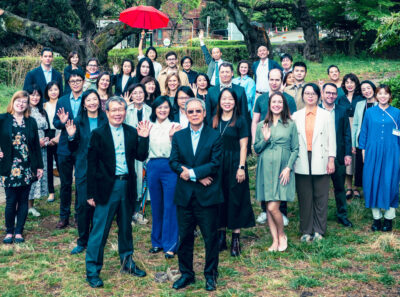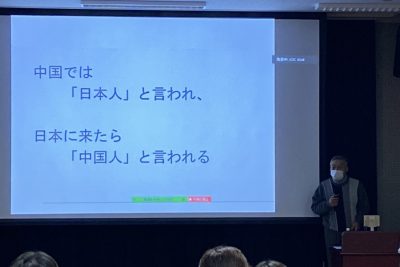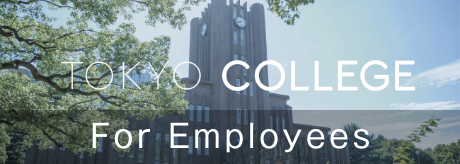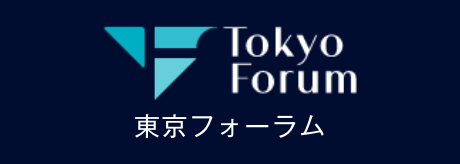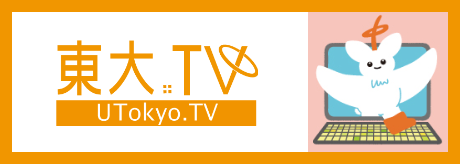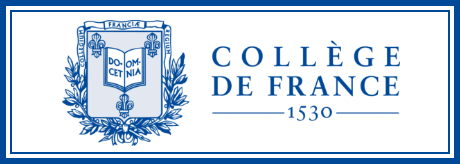Special Needs Education from the Perspective of Gifted Education: Problems and Solutions

This blog post was created as part of the "zengaku zemi" seminar "Towards an Inclusive Society: An Introduction to Disability Studies" offered at the University of Tokyo during the 2022-2023 academic year. In this course, undergraduate students from different fields of specialization chose a topic related to how individuals can create a more inclusive society and what we can do to contribute to that goal, and then they shared their findings in class at the end of the semester. The content of this article presents the outcome of one of those research projects.
Author
ŌTSUKA Manami
Undergraduate Student, PEAK Program, Humanities and Social Sciences III, College of Arts and Sciences Junior Division, The University of Tokyo
The picture that I made is on display alongside those of my classmates.
Our caretakers gaze at our sunflowers, their colors, and the shape of their petals.
"He has quite an eye--it must be nice to have such a talented child. That one's amazing, isn't it?"
This is what my mother says to me as she praises the “most” beautiful sunflower on the wall.
It wasn't mine.
It was the biggest, most vibrant sunflower.
"I should have mixed the orange and yellow together and made the petals more balanced like he did," I learn.
The blue sunflower I made must be bad, I learn.
Why, I wonder, do we judge people in comparison at others?
"Genius." Children that are born with natural, innate abilities are also called "gifted," and they receive praise for these abilities. But, as the phrase "lone genius" suggests, the category of "genius" is relative and can only be established through comparison with others. The term "gifted," which refers to being "more capable" than normal, simultaneously labels children who are "less able" as "disabled" and implies "inferiority." Is it really necessary that we make such a distinction -- that we assert that the attributes of disabled children are somehow not gifts?
In this essay, I will discuss philosophical problems underlying special needs education and the harmful effects that are made apparent through the current state of gifted education, as well as possible solutions to these problems.
Both Gifted and Disabled Children Have "Special Needs"
Although both "gifted" and "disabled" children appear out of place in regular classrooms, I want to assert that creating a distinction between them is not inherently necessary.
Let us consider the social model of disability. This model treats disability to be something that arises when an individual's physical or cognitive functions clash with society (e.g., objects, the environment, other people, etc.) (Oliver, 2013). In other words, disability is not an individual's impairment(s), but rather a category that emerges when those impairments fail to conform with societal expectations, creating disadvantages. By this definition, a disabled child in an educational context is one who is out of place in regular classrooms (in the current system). This is the case for both "gifted" and "impaired" children. By that logic, both are unmistakably "disabled," in essence.
Diagram 1 highlights how the terms are currently used to highlight inferiority and superiority.
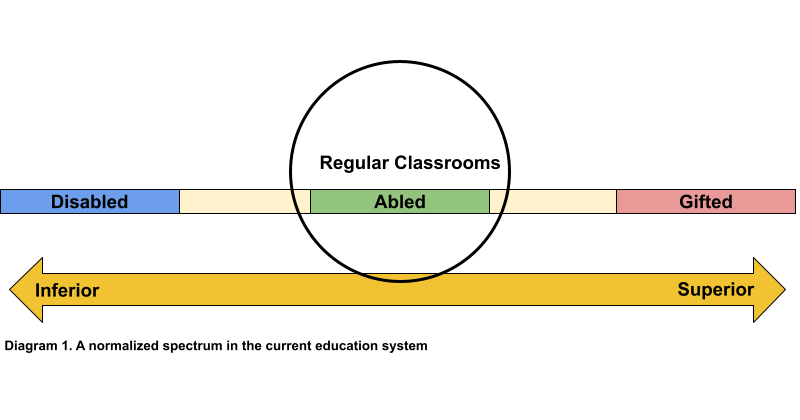
In what ways is this unnecessary distinction legitimized and promoted? Let us look at the current state of gifted education in Japan.
An Overview of Gifted Education: Its Definition, Philosophy, and Current State
Are "able" children always categorized as "gifted"? The term "gifted" refers to a category that captures a diverse group of people who "demonstrate or have the potential for extraordinary competence" in specific areas (e.g., intellectual ability, academics, arts, etc.) (Kobayashi 2021). For these students, gifted education provides services and activities that are unavailable in regular classrooms "in order to fully develop their abilities."
Gifted education, which targets children with special needs in regular classrooms, is promoted as a part of special needs education, but the above philosophy suggests problems with this education approach.
Problem #1: On the Right to "Reach" Only Available for the Gifted - Special Needs Education Problems Highlighted by Gifted Education
In the same way that gifted education is promoted to gifted children, "inclusive education" is recommended for disabled children. These measures, which include their relative valuations of inferiority and superiority, result in a philosophical contradiction within special needs education.
In Japan, the philosophy behind special needs education is:
- To build a "foundation for an inclusive society" with an awareness of disabilities and other individual differences, and;
- To understand the educational needs of each student, and then provide the guidance and support as necessary for enhancing their abilities and overcoming obstacles in life and learning (Wada 2010).
This approach is based on definitions of special needs education put forth by organizations like the OECD and UNESCO.
What we can extract from this philosophy is the fact that special needs education contains two vastly different objectives. Namely:
- Education as a microcosm of an inclusive society: To use the classroom as a kind of "mini" society where children can experience diversity (not exclusively in terms of disability). Compatible with inclusive education, wherein barriers (e.g. environmental, etc.) are removed to allow students with diverse abilities and backgrounds to learn in the same classroom.
- Education for the purpose of fostering talent: To bring out the maximum potential of each student, regardless of ability or disability. Compatible with gifted education, which is aimed at individual development.
The pursuit of both of these highly different philosophies simultaneously and in parallel, as is currently the case, makes the kind of student categorization that we see with gifted education and inclusive education inevitable.
However, as the name implies, inclusive education is not targeted at any particular group, while gifted education is only promoted to the gifted. Why is it that only those who are seen as promising are permitted to maximize their potential? The reason is perhaps related to the national policy perspective on gifted education.
Recent years have seen attempts at neoliberal education reforms, and we can observe that they have been informed by eugenic thought (Kuwahara 2005). In fact, gifted education has been implemented as a matter of national policy in China, South Korea, and Singapore, where "aptitude growth" is extolled and embraced as a kind of "special support" for the purpose of fostering talent to serve national interests. The distinction between gifted education and inclusive education operates on a differentiation between "social participation" for children without a high growth potential and "ability growth" for those who do.
Problem #2: The Conflict of Being Disabled Without "Gifts" - On Talents that "Offset" Disabilities
Let's consider some of the characteristics of gifted children.
- Unwillingness to act without motivation
- Emotional ups-and-downs
- Restlessness
At a glance, these qualities are similar to those with intellectual and developmental disabilities. In fact, it is common for gifted children to be "misdiagnosed with developmental or psychological disabilities" and have "weak psycho-social skills" (Kobayashi 2021).
Developmentally disabled children with "gifts" are said to have dual special needs, also known as "twice exceptional" (2E).
At this point, the problem then becomes a new pressure on those with developmental disabilities who are not gifted. Although gifted individuals may often share certain characteristics with those with developmental disabilities, once the element of "talent" comes into play, these characteristics are suddenly reinterpreted as a "reason" for their genius. What this shows is that "talent" has the effect of "offsetting” the negative aspects of a disability.
The success of gifted children brought about by gifted education can reinforce the stereotype that "developmental disabilities = special talents," thus exacerbating the difficulties of everyday life for those with developmental disabilities without "gifts." For example, Suzuki Nozomi, who has temporal lobe epilepsy, autism spectrum disorder, and attention deficit hyperactivity disorder, and is also the mother of a son with autism spectrum disorder, describes in her column some of the conflicts of having a developmental disability "without having a special talent." In recounting one stereotype she faces, she says:
After revealing that my son has a developmental disorder, I received advise like, "Shouldn't you enroll him in special lessons or something? I've heard that people with disabilities have special talents that regular people don't have." (Suzuki 2020)
A Solution: Individualized and Inclusive Education That is Both Simultaneous and Parallel
In order to solve the problems caused by the mixing of different special education philosophies, different approaches must be applied for each philosophy in a manner that does not differentiate between students.
What I propose is the simultaneous and parallel application of both individualized and inclusive education.
Education for nurturing ability: Create educational goals and programs in line with a child's needs regardless of ability.
- Advantages: Accomplishes goal of nurturing individual abilities while also removing the sense of "comparison" related to particular abilities; also reduces notion of "gifted" and "disabled."
- Problems related to insufficient personnel. Students won't learn social awareness.
Education for building the foundation of an inclusive society: No need to be carried out in a classroom, but you could argue that a place where children gather happens to be a classroom. Therefore, for it to be more of a "social” study rather than formalized study, you introduce a group project or similar activity one session a day separately from the individualized education. For example, students in randomized groups (regardless of disability or ability) would give presentations on a topic like “suggestions for equipment they think the school needs."
- Advantages: By working in randomized groups, students learn how to consider the opinions and perspectives of others, how to divide roles based on what someone is good at, and how to develop the communication and cooperation skills that form the basis of a more inclusive society.
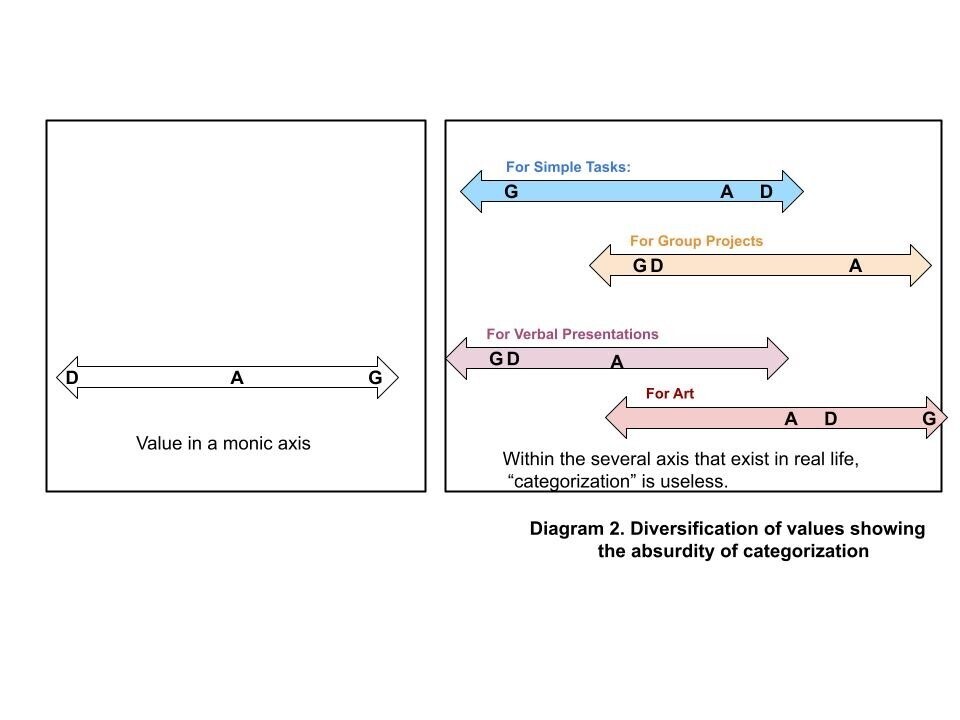
As shown in Diagram 2, instead of plotting students' abilities on a linear axis, we can allow them to experience firsthand that there are many "axes" and incorporate the uselessness of such categorizations into their education.
This reduces the "developmental disability = has a special talent" stereotype that arises from the more monistic perspective of "talent” being able to “offset disability."
Conclusion: Inclusive Society and Education
In a society that puts weight on ability, the "gifted," children of relative excellence according to a single axis, are treasured and revered.
_
"The way this blue is used here is really lovely. Sunflowers are yellow, but this perspective is also nice."
A society that looks at a child and sees their own potential--is that not what makes a society inclusive?
References
Connor, David, et al. “Disability Studies and Inclusive Education — Implications for Theory, Research, and Practice.” International Journal of Inclusive Education, vol. 12, Jan. 2009. tandfonline, https://www.tandfonline.com/doi/abs/10.1080/13603110802377482 Accessed 19 Dec. 2021
Draaisma, Douwe. “Stereotypes of Autism.” Philosophical Transactions of the Royal Society B: Biological Sciences, vol. 364, no. 1522, May 2009, pp. 1475–80. PubMed Central, <https://www.ncbi.nlm.nih.gov/pmc/articles/PMC2677582/> Accessed 12 Mar 2021.
Jolly, Jennifer, and Russell Warne. Reconciling Contemporary Gifted Education with Its Foundations. 2019. ResearchGate, https://doi.org/10.31234/osf.io/rzsfw. Accessed 20 July 2022.
Knights, Karl. “Rain Man Made Autistic People Visible. But It Also Entrenched a Myth | Karl Knights.” The Guardian, 17 Dec. 2018, <http://www.theguardian.com/commentisfree/2018/dec/17/rain-man-myth-autistic-people-dustin-hoffman-savant> Accessed 12 Mar 2021
Kobayashi, Shigeru. "Nihon ni okeru gifted to iu go no juyō no kadai." Bulletin of Faculty of Psychology Sapporo Gakuin University, vol. 3, no. 2, Feb. 2021, pp. 1–11. Accessed 27 Jul 2022.
OECD. DIVERSITY, INCLUSION AND EQUITY: INSIGHTS FROM SPECIAL NEEDS PROVISION. 2003.
Oliver, Mike. “The Social Model of Disability: Thirty Years On.” Disability & Society, vol. 28, no. 7, Oct. 2013, pp. 1024–26. Taylor and Francis+NEJM, https://doi.org/10.1080/09687599.2013.818773. Accessed 27 Jul 2022
Senshin kagaku puroguramu | Tobi nyūgaku | Kokuritsu daigaku hōjin Chiba daigaku senshin kagaku sentā. https://www.cfs.chiba-u.ac.jp/early_admission/index.html. Accessed 20 July 2022.
Seo, Masao. Beikoku no shōgai kyōiku ni okeru kobetsu kyōiku keikaku (Individualized Education Program) ni kansuru kōsatsu. 1982. Accessed 27 Jul 2022
Suzuki, Nozomi. "Hattatsu shōgai = tensai? 'Bon'yō na jibun' mo 'musuko no sonzai sono mono' mo kōtei suru -- Sainō sagashi ni kurushinda shōgakusei jidai ni deatta kotoba to, ima negau koto." Woman Excite, 2020 7 Feb. https://woman.excite.co.jp/article/child/rid_Hnavi_35027099/ Accessed 27 Jul 2022.
Wada, Akira. "Tokubetsu shien kyōiku kara inkurūshibu kyōiku e ~Shōgaisha kenri jōyaku hisui ni muketa ugoki no naka de~." Nihon kyōshokuin kumiai, vol. sōdanshitsu dayori, 2012.


